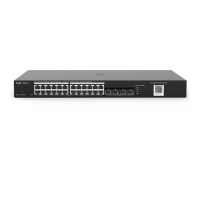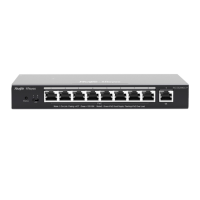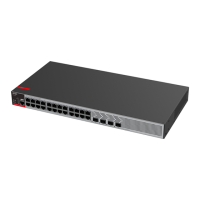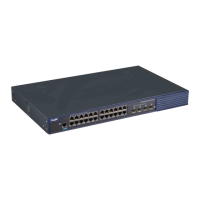RG-ES206GS-P Series Switches Hardware Installation and Reference Guide Appendix D — Cabling Recommendations
- 30 -
Appendix D — Cabling Recommendations
When the switch is installed in a standard 19-inch rack, secure the cables around the cable management
brackets. Adopt top cabling or bottom cabling according to the actual situation in the machine room. All cable
connectors used for transit should be placed at the bottom of the cabinet rather than be exposed outside of the
cabinet. Power cords are routed beside the cabinet, and top cabling or bottom cabling is adopted according to
the actual situation in the equipment room, such as the positions of the DC power distribution box, AC socket,
or lightning protection box.
Requirements for Cable Bend Radius
The bend radius of a fixed power cord, network cable, or flat cable should be over five times greater than
their respective diameters. The bend radius of these cables that are often bent or plugged should be over
seven times greater than their respective diameters.
The bend radius of a fixed common coaxial cable should be over seven times greater than its diameter. The
bend radius of the common coaxial cable that is often bent or plugged should be over 10 times greater than
its diameter.
The bend radius of a fixed high-speed cable (such as SFP+ cable) should be over five times greater than its
diameter. The bend radius of the fixed high-speed cable that is often bent or plugged should be over 10
times greater than its diameter.
Requirement for the Minimum Bend Radius of an Optical Fiber
The diameter of a fiber tray to hold fibers should be over 25 times greater than the diameter of the fiber.
When an optical fiber is moved, the bend radius of the fiber should be over 20 times greater than the
diameter of the fiber.
During cabling of an optical fiber, the bend radius of the fiber should be over 10 times greater than the
diameter of the fiber.
Precautions for Bundling up Cables
Before cables are bundled, mark labels and stick the labels to cables wherever appropriate.
Cables should be neatly and properly bundled in the rack without twisting or bending, as shown in Figure
D-1.
Figure D-1 Binding Cables (1)
